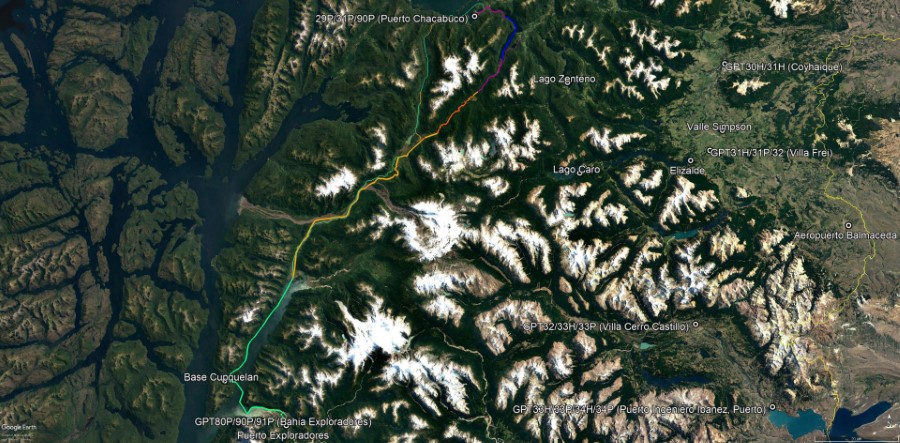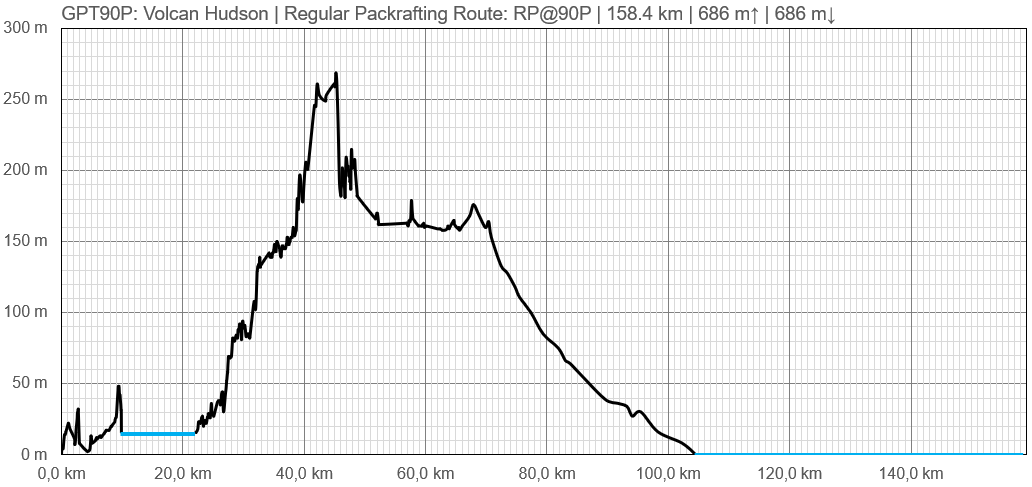GPT90P - Volcán Hudson
|
|
| |||||||||||||||||||||||||||||||||||||||||||||
Recent Alerts and Suggestions
Season Section Log
- GPT90P Investigation of Option 1 from Puerto Aysen to Lago Condor / 2019-Nov-27 / 2 days / Meylin Ubilla & Jan Dudeck
10 years ago it would have been an uncomplicated packraft-hiking-traverse to get from Puerto Aysen to the barely known Lago Condor. At this time settlers lived on this lake and a power-utility-company performed a research for a hydro-power-project. The hydro-power-project was cancelled off; the settlers left their property and visited it for the last time around 2013 and since then humans left this place for good.
Now in 2019 it requires probably a 2-day machete fight to cover the roughly 5 km on a now completely overgrown and muddy former trail from the closest river landing beach.
This transformation is visible to a careful observers on satellite images. When scrolling through the different images of this area trails and research sites are clearly noticeable around 2011 but these signs of human intervention disappear on images from 2016 and later.
To our surprise we meet the last settler in this area; Don Jose Vera; in a Puesto a few hundred meters up the river from the fjord. He provided us with the above information that confirmed our analysis of satellite images and other publicly available information.
Due to a other plans, a different more promising route and unsuitable weather we returned to Puerto Chacabuco after meeting and speaking with Don Jose Vera.
In the coming week we will investigate another more promising route into these hidden valleys and if successful then adventurous packrafters might become the first visitors of Lago Condor in years by combining two routes into a circuit.
Anyone interested to rediscover the route to Lago Condor, Lago Claro and Lago Ellis should:
1. Paddle on a calm day from Puerto Aysen or Puerto Chacabuco to the mouth of the river that drains Lago Condor.
2. Attempt to paddle 2.5 km on this river against the flow to an open area (“pampita”). This is best done on high tide. If this is not possible then get at least to the Puesto of Don Jose Vera and follow the trail next to the river to this open area (reasonable well maintained but muddy). Locals occasionally visit this place by motor boat to collect fire wood.
3. Build your camp in this open area and search and re-open the old trail to Lago Condor. This will take at least one day but best plan two full days.
4. Cross the 14 km long Lago Condor.
5. Traverse the 3 km from Lago Condor to Lago Claro on land. You will pass an abandoned settlement area.
6. Cross the 5 km long Laguna Claro.
7. Traverse the 2 km from Laguna Claro to Lago Ellis possibly following the river.
8. If confirmed in the next week return on a still maintained trail from Lago Ellis to Lago Riesco from where you can packraft on Rio Blanco back to Puerto Aysen.
This traverse is best attempted in January, February or March after a relative dry period.
The first documented traverse of this route was done around 1947 by Agusto Grosse with much inferior gear. So, should you make it there is no reason to feel heroic but recognize the achievement of the people that had been there before.







